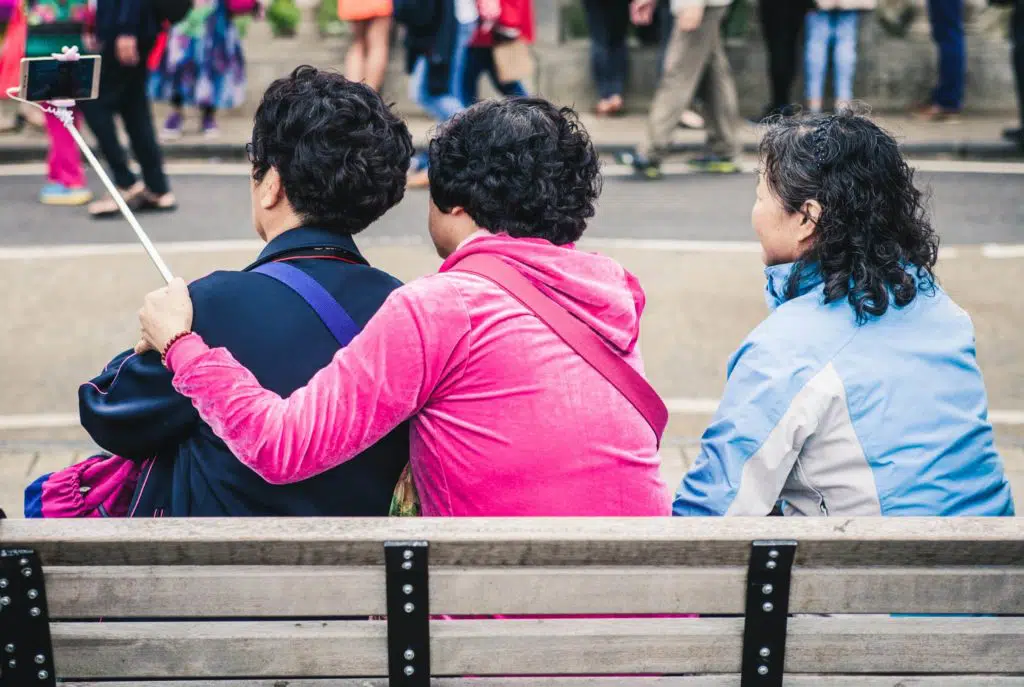Selfies are the queens of pictures. Although there is much discussion on who invented them, we can’t deny that selfies are omnipresent in our daily lives.
There are about 93 million selfies taken every day. It might have started as a phenomenon amongst teenager, especially popular on platforms such as Snapchat, but chances are high you’ve seen your mum uploading a selfie on her Facebook wall these days.
And there are so many different types of selfies. There are the selfies that we quickly take with our friends, the ones where we choose a filter with fluffy bunny ears, the ones without make-up or a funny face. And there are the ones that we change our outfit for, try a hundred different angles and even more filters, find the right hashtags, and upload them at the exact right moment on our Instagram account.
Selfies take up a big part of our daily life. But how can we, as marketers, tag on to this? How can we use the widespread selfie-culture for our brands?
More authenticity and User-Generated Content
Although some selfies take hours of preparation work, people still perceive them as much more authentic. There is a big difference between a Kardashian posting a selfie with a certain product, versus a brand using a staged shoot with a model promoting that same product. The first one is more trustworthy and authentic, which is valued much more by customers.
Entering influencer marketing. According to Zariance, 70 percent of teens trust influencers more than celebrities, and 6 out of 10 teens follow their advice. These recommendations help people to trust a brand, making it more likely they will invest in their product or services.
But it’s not only the small group of influencers that can use selfies to promote your brand. User-generated content is taking a centre stage online. People, and especially Generation Y’ers, love participating in this type of marketing, creating an opportunity for your brand to promote yourself in a way of marketing that is probably closest to mouth-of-word recommendations.
25% of internet users using Ad-Blocking technology to avoid traditional ads, whereas they are showing interest in videos made by influencers. No wonder marketers should explore the way they can involve self-portraits featuring their brands in their marketing strategy.
Instagram versus Snapchat in relation to selfies
Selfies are narcissistic, there is no way around that. But studies show that the level of self-love strongly depends on the social media platform.
Instagram is used for your most ideal self. People upload pictures where they look their best selves and show these pictures to the world. This is not only noticeable with selfies but even travel or nature photography is highly edited and perfected on Instagram. Snapchat, on the other hand, is a more spontaneous platform. Mostly because of its temporary character, people upload selfies where they don’t always have to look perfect. Instagram is the most impactful influencer marketing channel with more than 1 billion users and a rapidly growing network of influencers. Whereas Snapchat is the least preferred channel.
The same goes for the Instagram stories, which are only visible for 24 hours. Because both Snapchat and Instagram stories aren’t permanent, these platforms give room for more in-the-moment photos, without editing or too many filters.
This gives us also some interesting insights into the platforms for marketers when it comes to selfie-marketing. If your brand focuses on ways or products to improve somebodies life, it might benefit more from Instagram. If your brand represents daily life, spontaneous and authentic products, it might benefit more from channels such as Snapchat.
Are we getting selfie sick?
So what about the future of selfies? We don’t look up anymore if we see somebody turning their head in a weird position while holding up the phone. But are we still embracing this self-indulged type of photography?
A German study showed that most of us rather never see a selfie again. We are getting annoyed by its narcissistic character, the selfie sticks ruining our view and the duck-face ruining our appetite. But even though we sometimes hate the self-orientated picture, we still love taking them. And especially the Gen Yers wouldn’t go a day without pointing the camera at themselves. Even though the trends might change, and the duck-face, the gaze or the fish gape are passé, we will always find a new angle to play with (the #nomakeup selfie gained over 16 million mentions on Instagram).
And your conclusion regarding selfies
So let’s just face it, we aren’t getting rid of the selfie just yet. Just think of it, when was the last time you heard somebody asking ‘Would you mind taking a picture of us?’.



